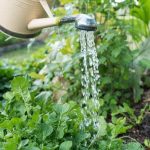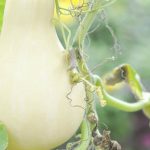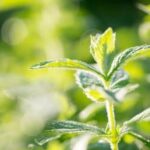Welcome to the vibrant world of summer vegetable gardens in South Central Texas, where enthusiasts can turn their yards into bountiful oases of fresh produce. The hot and arid climate of this region presents unique challenges and opportunities for gardeners looking to grow their favorite vegetables. From tomatoes to peppers, cucumbers to squash, there’s a wide array of plants that thrive in the Texas summer sun.
In this guide, we will delve into the essential aspects of successful summer vegetable gardening in South Central Texas. From understanding the climate considerations specific to this region to selecting the right vegetables that can withstand the heat, we aim to provide you with valuable insights and tips for cultivating a thriving garden. With proper soil preparation, watering strategies, and pest control methods, you can maximize your harvest and enjoy the fruits of your labor.
Whether you are a seasoned gardener or just starting out, this guide will equip you with the knowledge and resources needed to create a successful summer vegetable garden in South Central Texas. From connecting with local gardening communities to discovering delicious recipe ideas for your harvest, there is so much to explore and savor in this exciting journey of growing your own food right at home.
Let’s dive in and embrace the beauty and bounty that awaits in your very own backyard oasis.
Climate Considerations
When it comes to summer vegetable gardens in South Central Texas, one of the crucial aspects to consider is the climate of the region. The hot and dry summers in this area can pose unique challenges for gardeners, but with proper planning and strategies, there are also many opportunities to cultivate a thriving garden even in the Texas heat.
- One key consideration for gardening in South Central Texas is the high temperatures that are characteristic of the summer months. It is important to select heat-tolerant vegetables that can withstand the intense heat and sunlight.
- Another important aspect to keep in mind is the limited water availability during the summer season. Drought conditions are common in this region, so efficient watering strategies are essential for maintaining a healthy garden.
- Furthermore, the extended periods of sunshine in South Central Texas can be both a challenge and an advantage for vegetable gardens. While too much sun exposure can lead to sunscald or wilting, it also provides ample opportunity for photosynthesis and plant growth when managed effectively.
In order to navigate these climate considerations successfully, gardeners in South Central Texas should focus on selecting the right plants, implementing proper watering techniques, and providing adequate shade or protection for their vegetables when needed. By understanding and working with the unique challenges and opportunities of gardening in this region, enthusiasts can create a flourishing summer vegetable garden that will yield an abundant harvest despite the Texas heat.
Selecting the Right Vegetables
When it comes to creating a successful summer vegetable garden in South Central Texas, selecting the right plants is crucial. The region’s hot and humid climate presents unique challenges for gardeners, making it essential to choose vegetables that can thrive in these conditions. Some of the most suitable options for a summer vegetable garden in South Central Texas include tomatoes, peppers, okra, squash, and beans.
Heat-Tolerant Varieties
Opting for heat-tolerant varieties of vegetables is key when planning your summer garden. Look for specific cultivars that are known to withstand the intense sun and high temperatures of South Central Texas. For example, cherry tomatoes, jalapeno peppers, and black-eyed peas are all excellent choices for this region. These varieties have adapted to the local climate and are more likely to yield a successful harvest during the hot summer months.
Quick-Maturing Plants
In South Central Texas, where the summers are long and often scorching, selecting quick-maturing plants can also be advantageous. By choosing vegetables that have shorter growing seasons, you can maximize your chances of seeing a bountiful harvest before the extreme heat sets in. Cucumbers, radishes, and bush beans are all fast-growing options that can thrive in the summer vegetable gardens of this region.
Drought-Resistant Options
Given the arid conditions of South Central Texas during the summer months, it’s wise to include drought-resistant vegetables in your garden. Plants like sweet potatoes, eggplants, and Swiss chard have deep root systems that enable them to tolerate periods of dryness. By incorporating these water-wise options into your garden bed, you can help ensure a successful yield even during times of limited rainfall.
Soil Preparation
Testing Your Soil
Before planting your summer vegetable garden in South Central Texas, it is essential to test your soil for its pH levels and nutrient composition. You can easily do this by purchasing a soil testing kit from your local garden center or contacting the agricultural extension office in your area. Understanding the quality of your soil will help you determine which amendments are needed to create an optimal growing environment for your vegetables.
Adding Organic Matter
In the hot Texas summer, the soil can quickly dry out and become depleted of nutrients, making it challenging for plants to thrive. One way to combat this issue is by incorporating organic matter into your soil, such as compost or well-rotted manure.
These materials help improve soil structure, retain moisture, and provide essential nutrients for healthy plant growth. Mix in a generous amount of organic matter before planting to ensure that your summer vegetables have the best possible start.
Proper Mulching Techniques
Mulching is another crucial step in preparing your garden bed for a successful harvest. In South Central Texas, where temperatures can soar during the summer months, mulch helps regulate soil temperature, reduce moisture loss, suppress weed growth, and prevent erosion.
Choose a natural mulch like straw, leaves, or wood chips and apply a thick layer around your plants while keeping it several inches away from stems to prevent rot. By implementing proper mulching techniques, you can create an ideal growing environment for your summer vegetable gardens in South Central Texas.
Watering Strategies
When it comes to summer vegetable gardens in South Central Texas, one of the most critical aspects to consider is proper watering strategies. The hot and arid climate of this region poses a unique challenge for gardeners, making it essential to ensure that your plants receive an adequate amount of water to thrive. To keep your summer vegetable garden hydrated during the scorching Texas heat, it is important to establish a consistent watering routine.
One effective way to ensure your plants receive enough moisture is by watering deeply and infrequently. This method encourages the roots of your vegetables to grow deeper into the soil, making them more resilient during dry spells. Consider using a soaker hose or drip irrigation system to deliver water directly to the base of your plants, minimizing evaporation and ensuring efficient hydration. Additionally, mulching around your plants can help retain moisture in the soil and reduce water loss through evaporation.
Proper timing is also crucial when it comes to watering your summer vegetable garden in South Central Texas. Early mornings are considered the best time to water your plants as it allows them to absorb moisture before the heat of the day sets in.
Avoid watering during the hottest part of the day, as much of the water will evaporate before reaching the roots. By following these best practices for watering, you can help your summer vegetable garden thrive in the Texas heat and enjoy a bountiful harvest throughout the season.
| Watering Strategies | Best Practices |
|---|---|
| Water deeply and infrequently | Encourages deeper root growth and resilience |
| Use soaker hoses or drip irrigation systems | Deliver water directly to plant roots with minimal evaporation |
| Water early in the morning | Allow plants to absorb moisture before high temperatures set in |
Pest Control
When it comes to maintaining a successful summer vegetable garden in South Central Texas, dealing with pests can be a significant challenge. However, there are several natural and effective methods for keeping your plants safe without resorting to harmful chemicals. Here are some eco-friendly pest control strategies to help you protect your garden:
- Encourage beneficial insects: Introducing beneficial insects like ladybugs, lacewings, and praying mantises can help keep pest populations in check. These natural predators feed on common garden pests such as aphids, caterpillars, and beetles, reducing the need for chemical pesticides.
- Companion planting: Planting certain vegetables and herbs together can also help deter pests and promote overall garden health. For example, marigolds are known to repel nematodes, while planting basil near tomatoes can help ward off tomato hornworms.
- Homemade pest sprays: Creating your own organic pest sprays using ingredients like neem oil, garlic, or pepper can be an effective way to combat pests without harming beneficial insects or contaminating your vegetables.
By incorporating these natural pest control methods into your gardening routine, you can protect your summer vegetable gardens in South Central Texas while maintaining a safe and healthy environment for both your plants and the surrounding ecosystem. Remember that prevention is key when it comes to managing pests, so regularly monitoring your garden for signs of infestation and taking proactive measures will ultimately lead to a more abundant harvest.
Harvesting and Enjoying the Fruits of Your Labor
When it comes to harvesting the fruits of your labor from summer vegetable gardens in south central Texas, timing is crucial. Knowing when to harvest your vegetables ensures that you enjoy them at their peak flavor and nutritional value. In the hot Texas summer, many vegetables mature quickly, so it’s essential to keep a close eye on your garden for ready-to-harvest produce.
One important aspect to consider when harvesting from summer vegetable gardens in south central Texas is the specific growing season of each plant. Tomatoes, for example, should be harvested when they are fully ripe and show vibrant coloration. Peppers can be picked at different stages depending on your preference – from crunchy green to mature red or yellow. Zucchini and cucumbers are best harvested while they are still tender and small.
Aside from knowing when to harvest, exploring delicious recipe ideas can elevate your culinary experience with homegrown produce from your summer vegetable garden in south central Texas. Whether you choose to make a zesty salsa with freshly picked tomatoes and peppers or sauté zucchini with garlic and herbs, the possibilities are endless. From salads to stir-fries, incorporating your garden-fresh ingredients into meals can truly showcase the flavors of the season.
| Vegetable | Harvesting Guidelines |
|---|---|
| Tomatoes | Harvest when fully ripe with vibrant coloration |
| Peppers | Pick at different stages based on your preference (green to red or yellow) |
| Zucchini/Cucumbers | Best harvested while still tender and small |
Community Resources
When embarking on your summer vegetable garden journey in South Central Texas, it’s important to remember that you are not alone. There is a vibrant community of like-minded individuals who share your passion for gardening and can provide valuable support and inspiration along the way. By connecting with other gardeners and local organizations, you can learn from their experiences, exchange tips and tricks, and even participate in communal gardening projects.
One great resource for gardeners in South Central Texas is the local agricultural extension office. These offices offer a wealth of information on gardening practices specific to the region, including recommended plant varieties, pest control strategies, and soil management techniques. Additionally, they often host workshops, classes, and events aimed at educating and connecting garden enthusiasts.
Joining a gardening club or organization can also be a rewarding experience for those looking to connect with fellow green thumbs. These groups often organize seed swaps, plant sales, garden tours, and social gatherings where members can share their love of gardening. By networking with other gardeners in your community, you may discover new techniques or varieties to try in your own summer vegetable garden.
Conclusion
As we conclude our exploration of summer vegetable gardens in South Central Texas, it is evident that these gardens offer a beautiful and bountiful experience for gardeners in the region. Despite the unique climate challenges, selecting the right vegetables, preparing the soil correctly, implementing watering strategies, and practicing natural pest control can result in a successful harvest. Embracing the beauty of nurturing life from seed to harvest is a rewarding journey for those who venture into summer gardening.
The vibrant world of summer vegetable gardens in South Central Texas not only provides fresh produce but also connects individuals with nature and their community. Through harvesting and enjoying the fruits of their labor, gardeners can savor the flavors of locally grown food and explore creative recipes using their home-grown ingredients. The sense of accomplishment and pride that comes from cultivating a successful garden contributes to overall well-being and sustainability.
In closing, as you embark on your own summer vegetable garden journey in South Central Texas, remember to seek out community resources for support, inspiration, and to connect with fellow gardeners. By coming together and sharing knowledge and experiences, you can enhance your gardening skills, foster a sense of belonging within the gardening community, and contribute to the flourishing culture of summer vegetable gardens in this region.
Let your garden be a sanctuary where you can immerse yourself in nature’s beauty while reaping the delicious rewards of your hard work.
Frequently Asked Questions
What Can I Plant in My Summer Garden in Central Texas?
In Central Texas, you can plant a variety of vegetables in your summer garden. Some great options include tomatoes, peppers, okra, eggplant, squash, cucumbers, and sweet potatoes. These veggies thrive in the warm climate of Central Texas and can produce a bountiful harvest.
What Are the Best Summer Veggies in Texas?
When it comes to the best summer veggies in Texas, there are several options that do exceptionally well in the Lone Star State’s hot weather. Some top choices include jalapenos, bell peppers, squash, zucchini, cucumbers, tomatoes, and green beans. These vegetables not only grow vigorously during the summer months but also add delicious flavors to your meals.
What Vegetables Do Well in Texas Heat?
Several vegetables are known for doing well in the intense heat of Texas summers. These include okra, tomatoes, peppers (both sweet and hot varieties), eggplant, sweet potatoes, and black-eyed peas. These plants have adapted to thrive in high temperatures and can withstand the challenging conditions of Texas summers.

If you’re looking to get into vegetable gardening, or are just looking for some tips on how to make your current garden better, then you’ve come to the right place! My name is Ethel and I have been gardening for years. In this blog, I’m going to share with you some of my best tips on how to create a successful vegetable garden.





